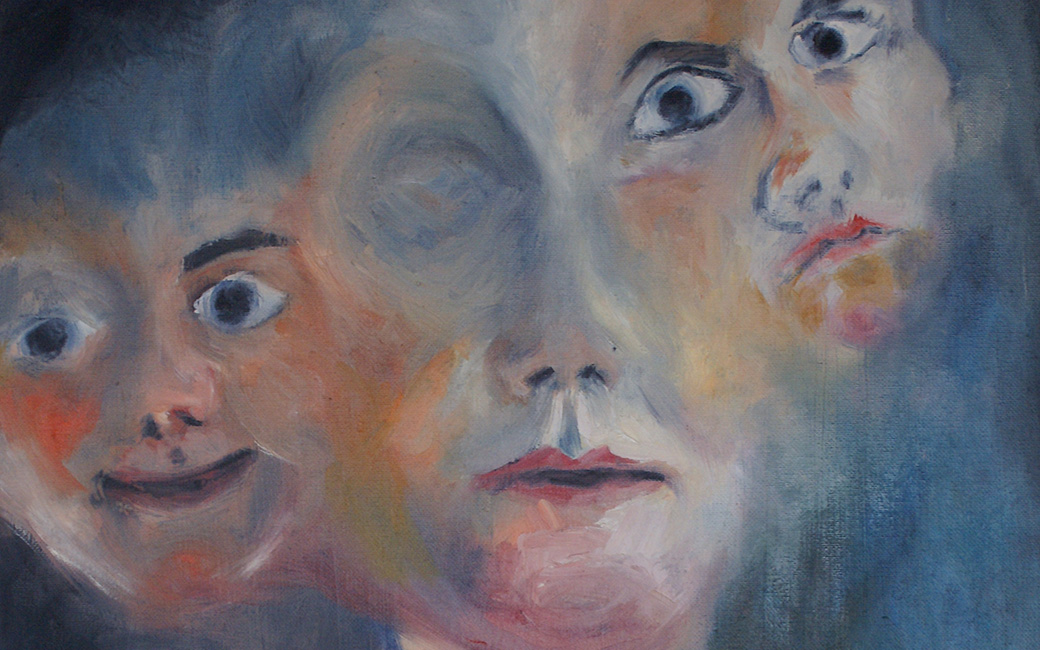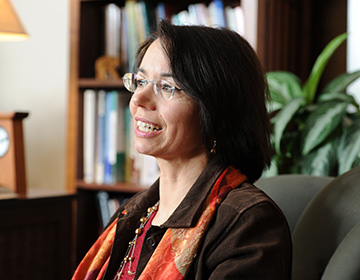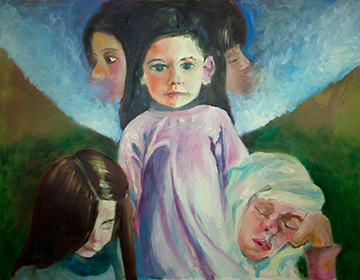On Their Minds
A Towson professor's global research on mental illness touches two alumnae at home.

Cathy Rose's voice doesn't change while she talks. She doesn't suddenly bear a different expression or posture. Her Baltimore County accent never leaves her; no Southern belle or gruff motorcyclist emerges. She is, in short, nothing like what you would see on TV or in a movie. But in her mind, Cathy carries the identities of 20 different parts.
The 1994 Towson University graduate has Dissociative Identity Disorder (DID), formerly known as Multiple Personality Disorder. It's the result of years of sexual abuse by her mother and stepfather. When she was a student, she didn't know she had DID. All she knew was that she felt nothing—not even the will to live.
"People like to feel like they're part of the human race," Cathy says. "That's how they get joy or pleasure out of life. I didn't feel any of that."
Yet for years, Cathy refused to accept her diagnosis. She feared it would make her life much more complicated. She resisted targeted DID therapy until one of several breakdowns left her hospitalized in 2006.
"I realized that until I admitted that I had DID and I addressed my parts, they were going to keep making my life unmanageable."
Unlocking the Answers
Towson University psychology professor Bethany Brand is currently leading the world's largest and longest study of treatments for dissociative disorders — an umbrella category of mental illnesses, including Dissociative Identity Disorder.

Movies and television have largely misrepresented DID and rarely explained why it exists. The reality is that "parts" are like gatekeepers—compartments that lock away various memories and feelings connected to childhood trauma so the child doesn't have to feel the psychological damage. For people with DID, mental illness develops when that protection starts to wear down. A dissociative disorder is, by definition, a side effect of abuse—a double-edged sword inflicted on those who should never have suffered the first pains.
"People who have been severely abused in childhood tend to think they are 'bad' or 'weak,'" says Brand. "Several participants in our first study found it downright shocking to fill out our surveys because it made them realize, 'These are symptoms, not signs that I'm just a bad person.'"
That first worldwide study determined that targeted treatment of dissociative disorders (DD) is effective: patients and their therapists reported fewer signs of the condition, including fewer suicide attempts and psychiatric hospitalizations. For years, researchers from Johns Hopkins insisted these disorders weren't valid and treatment was actually harmful. The Towson professor and her team had just proven them wrong.
In other words, they sparked hope.
"I think there are therapists who still don't believe in the diagnosis," says Rachel Elise '10, who also has Dissociative Identity Disorder. "It's one of the few serious mental illnesses that's entirely curable through psychotherapy, so it's particularly important to understand how to treat it."
That's right. It's curable. Movies don't tell you that, either, maybe because a cure takes so long. The average psychology treatment study lasts only about 13 weeks. But no one with a dissociative disorder gets better in three months. It takes years.
"People don't split unless they absolutely cannot handle something, so therapy involves facing that which completely broke you," explains Rachel, who was severely abused as a child. "It can take a long time to get into a place that is stable and grounded enough to do the core work."
Making History
By current data, the worst manifestations of dissociative disorders affect one percent of the world's population. The same is true for schizophrenia, a condition belonging to a different psychological category. But when Brand started researching DD in 2009, there were 103,000 scholarly articles on schizophrenia and only eight on DD. (Her team has since doubled that number.)
The reason for the disparity is that very few mental health professionals even know how to identify dissociative disorders, let alone how to treat it well. People with DD are often misdiagnosed, leading to years of damaging drug treatments or therapy that never touches the core issue. Worse, some people with DD are dismissed as frauds. Brand's goal is to change all that, and help an underserved, under-identified, worldwide population get better.
And if improving or saving lives isn't a strong enough argument, here's another: the results of Brand's study could also cut health care costs. Undiagnosed, misdiagnosed or ineffectively treated patients with dissociative disorders deal with repeated emergency room visits, hospitalizations, prescriptions and other care needs.
"Think about the cost savings and reduction in suffering that could come from figuring out how to provide cost-effective interventions," Brand says.
Brand and her research team are developing web videos for therapists and patients. Used weekly, the videos, along with journaling and behavioral exercises, are designed to help patients diminish their symptoms, regulate their reactions and control unsafe behaviors. Brand's team includes web designers who will disseminate the videos on servers worldwide—accessible for free. Built-in analytics will assess efficiency, using participant feedback to determine the helpfulness of the exercises.
Art Imitating Life
Rachel is an artist, and she processes her disorder in her work. Unlike a lot of artists, her creations use different media, different styles and different approaches. Those differences, Rachel says, are the products of the parts that create the art.
"That's why art is so satisfying for me," she explains. "It's a way to integrate different pieces of my experience tangibly. Several parts can be saying something different, but it all comes together into one image."

Rachel points out that "normal" people take certain things for granted, like having a linear sense of time or a consistent way of looking at the world. Patients with Dissociative Identity Disorder don't have those things. Her art helps explain that. But she says it also conveys a common bond, an understanding that everyone struggles with who they are. "It's more exaggerated for someone with DID, but I think it's a universal experience to feel pulled by different sides of oneself, or to question one's true identity."
For Brand and her research team, the art lies in finding the most effective ways to help people who have suffered unspeakable trauma as children. It's work Cathy finds heroic.
"These researchers didn't have to go into this line of work. To me, those people are crusaders for us."
Funding the Research
Brand's study, TOP DD (Treatment of Patients with Dissociative Disorders) Network, requires funding—the most challenging part of the process so far. The recession and other cutbacks have made financial support hard to find. Towson University, Sheppard Pratt, therapists, patients and the researchers themselves have contributed. Give now.